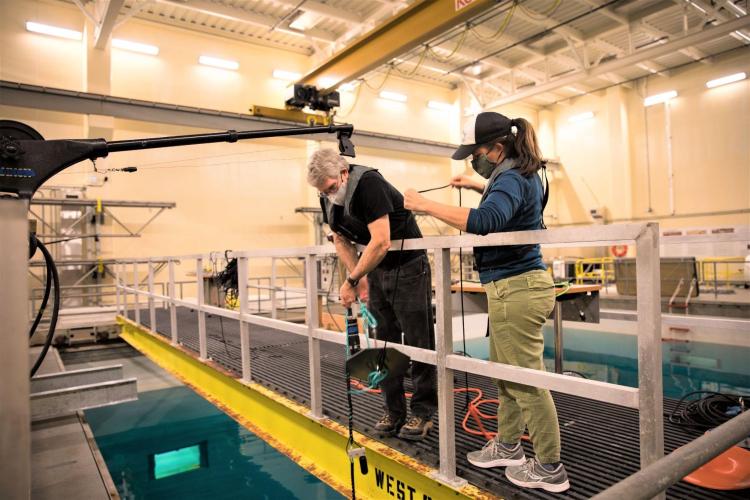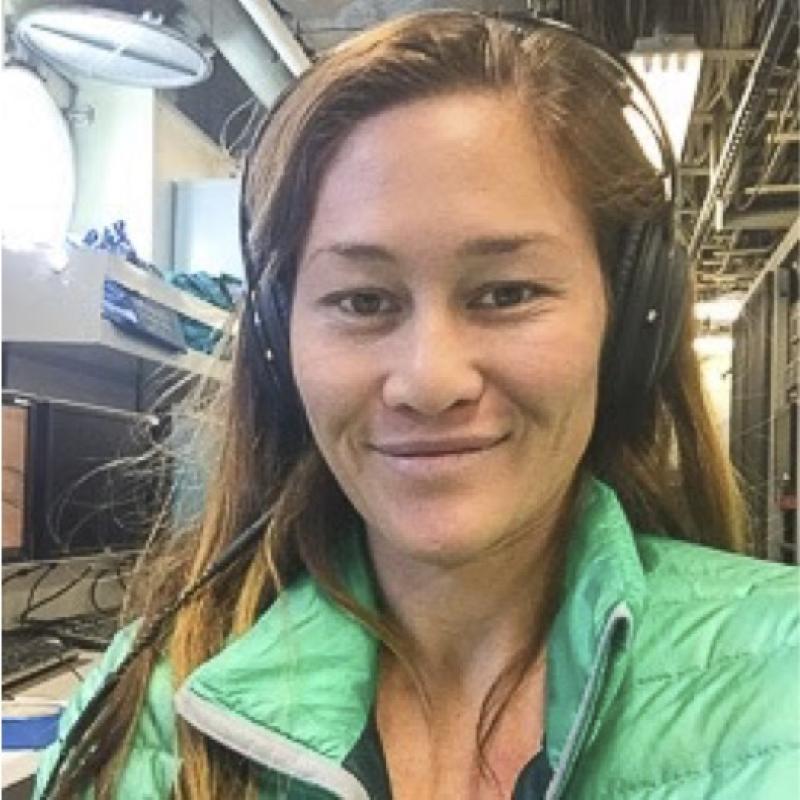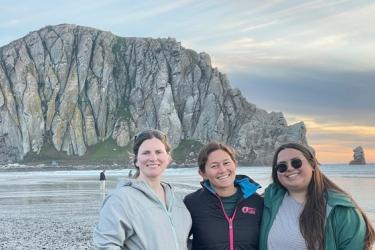Developing in-house acoustic technology (i.e. drifting buoys) comes with its list of pros and cons. Pro: you can design and build the exact equipment you need for your study. Con: no one else has tested your design and there could be issues.
The Southwest Acoustic Ecology Lab has been using drifting buoys (built in-house) to collect acoustic recordings for years now. But recently, when we were looking for baleen whales in our new recordings, we noticed that some buoys had a lot of low frequency noise. That noise was masking calls made by fin whales, blue whales, and potentially other species! Not good if you are trying to detect all whale species in a study area.
The solution to our problem started with troubleshooting our equipment in the coolest swimming pool you have ever seen. May I present the Ocean Technology Development Test Tank (located inside Southwest Fisheries Science Center). This 2-million-liter seawater tank allows scientists like us to test equipment in a controlled environment. What makes this tank different from a saltwater swimming pool? Well, its temperature can be adjusted from 2°–25°C, it has two moveable walkways, two overhead cranes, vibration and seismic isolation, and underwater observation windows. Plus, it has a water filtration and treatment system that allows the tank to accommodate live marine animals! So cool!
Today Shannon Rankin, Jay Barlow, and I decided to use this state-of-the-art facility to troubleshoot our drifting buoys. Because these buoys have evolved over time to improve both performance and reliability of our recordings, it’s hard to know which design change has contributed to our noise issue. So, let the troubleshooting begin…
We decided to use the same recorder for the two different buoy designs we were testing, and used the walkway as a testing platform. We did a tap/wiggle test on the rigid line attached to the top of the buoy in an attempt to simulate any vibrational strumming that may be occurring while at sea. We also walked along the platform, dragging the suspended buoy to simulate a current dragging the buoy through the water. We suspect that the noise may be due to vibration caused by a difference in current speeds between the surface and at depth.
While testing the two buoy designs, Shannon noticed that the hydrophones on the older design were wiggling back and forth during the walking test. This observation wouldn’t have been possible without the underwater windows in the tank—woo hoo! While this may not be the main cause of the noise, it is still something we would like to address. We can do that by making a rigid mount for the hydrophones so that they don’t move independently of the buoy line.
In addition to discovering the unexpected problem with the movement of the hydrophones, we have a few ideas for decreasing the difference in the drift between the surface and subsurface gear. We could add a small parachute to the top of the buoy to slow it down, and attach a dampener plate (a horizontal disk) to the top of the buoy to slow down vertical movement from swell.
Well, we are off to a good start on sorting out this pesky noise issue, and hopefully with a few tweaks to the design, we will be back in business. Next step? We need to test these modifications out in truly deep water (can you say sea trial?). Our plan is to test these modified buoys out in Monterey to make sure our noise issues are fixed before collecting new data. Hmm I sense another blog in our future...



